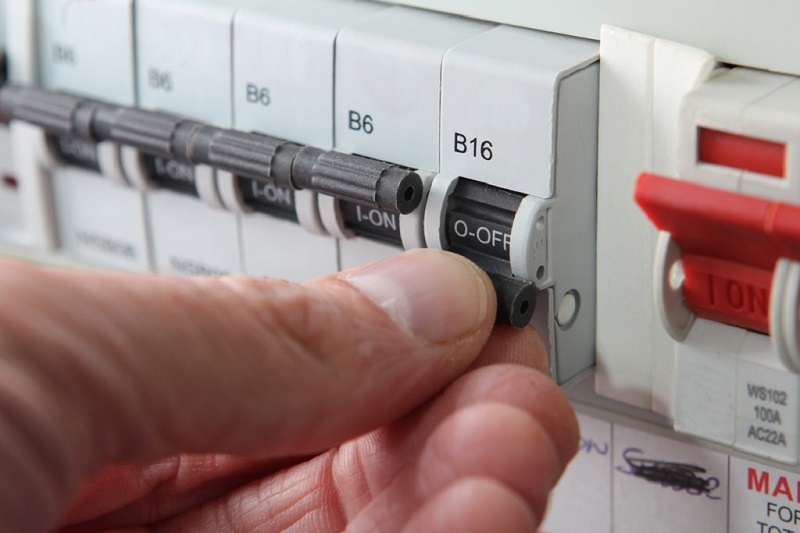Things You Should Know to Install a Replacement Consumer Unit
Consumer unit or CU is a suitable replacement for old fuse boxes, but however, units themselves become old, bypassing the time. Installing a replacement consumer unit can be tricky because it includes high voltage electricity and knowledge about electrical works. The replacement process requires a few hours to switch off the power and extra hours to design circuit connections. These steps require an electrical installation certificate to complete the process in the best position.
The modern consumer unit also has MCBs or mini circuit breakers that prevent electric shock and emergency electrical situations. Mini circuit breakers help to cut the faulty circuit in emergency conditions immediately. In some cases, depending on your circuit design, it is better if you stay on fuses and do not upgrade it to MCB. So before starting the replacement project, consult a professional electrician and make sure about your house wiring condition.
Reasons for Replacing a New Consumer Unit
- If you added a new room or a new floor and your home need more circuits
- Your current consumer unit is damaged and old
- Your current CU doesn’t have an RCD, and you need RCD protection
- Your cabling and house wiring is old with undersized earth wire
- Your current fuse is impossible to rewire
- You need a change in circuit design like separating and making a new power feed for the garage
- To simplify a complex circuit design or make a new system without errors.
You can also replace plastic consumer units with metal consumer units for more safety. It prevents the distribution of fire to the house. Plastic is a good conductor, but it can’t resist heat.
Which One to Choose? MCBs or RCBOs?
Modern consumer units have two different structures:
All the modern CU’s have two kinds of design those are:
- Dual RCDs (contains two RCD) or split load
- RCBO consumer units.
Probably you asked, “what is a split load consumer unit?” or “what is a dual RCD?”
Imagine there’s a problem in your house wiring, and the RCD trips off in a fault; in this situation, mini circuit breakers can be helpful. When the CU has a main switch to isolate the real power and dual RCD, half of the circuits can be controlled by the other RCD and prevent losing all powers simultaneously. Losing all the house power all at once can damage your appliance and be very troublemaking.
On the other hand, RCBO units include a main switch and RCBO protection, which means having an RCD and mini circuit breaker (MCB) in one unit. This RCBO technology can cover the faulty wiring and make much less damage and electrical fire. This option helps you to act better in an emergency situation and have time to choose a professional electrician.
RCBO consumer unit prices are higher than other types of CUs, but it has more benefits for domestic uses.
What are SPD and AFDD Consumer Units?
Wiring regulation in Britain changed so many times that these developments occurred because of safety. There are so many death cases annually because of unsafe electrical DIYs.
Two regulations added during recent years included:
- SPD or Surge Protection Devices are placed in the consumer unit. Surge protection devices protect the circuits downstream from heavy voltages. SPD is an expensive, sensitive sensor, but it prevents further damages like electrical fire from high voltages. SPD actually cuts off the electricity before it reaches the circuits.
- AFDD or Arc Fault Detection Device: AFDD is a device that alleviates the danger of electrical fire in circuits. Most electrical fire occurs because of a faulty arc. In consumer units with the Arc fault detection device, if any sparks are produced in the circuit, it doesn’t make any problem for RCD or mini circuit breaker so that they wouldn’t trip, and the power persists without tripping.
NOTE: both options are not necessary, and you can skip them. They are just available for more protection and safety.
Don’t Forget the Insulation Resistance Testing
Damaged or old house wiring can cause disconnections and faulty wiring issues. Have you ever tried to use a device but socket fuses tripping whenever you use a g? This happened because of an old wiring system. Insulation resistance testing helps you inspect these old wires and connect all circuits again.
Insulation r n electrician should do insulation resistance testing usually carried out a 500-volt DC connection between live conductors and the earth wire.
This process also requires knowledge about appliance voltages and resistance.
Consider the Certification and Licenses for Firing a Qualified Electrician
Fitting a new consumer unit is a super professional needed job, and you can’t do It by DIY videos by yourself. This work requires so much knowledge about wiring and electrical distribution, so please leave the task to the experts. When you choose a company or a private electrician, you should consider the requirements such as electrical licenses and certification. Earning these certifications requires hours of study and experience and defining your electrician level of expertise. So make sure that the electrician has an EIC or DIEC. The replacement of the consumer unit also needs a Part P certification for properties in London.
Our staff in Electric Works London are full experience electricians with qualified certifications and requirements; if you need help with your old consumer unit, contact us for more information.




